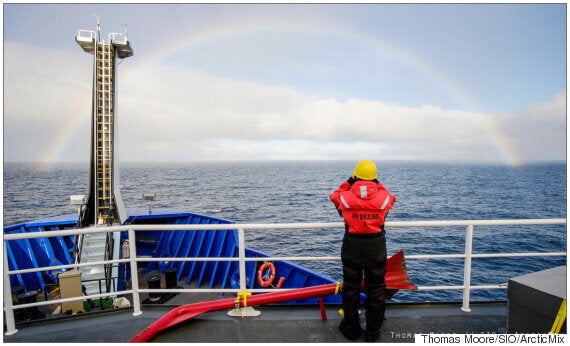Voyagers have gathered evidence suggesting that a well of heat in the depths of the Arctic ocean could be accelerating that rate at which ice is melting.
As the receding layers of ice increases the ocean's exposure to wind, researchers have said the passing air is stirring heat upwards.
"The strength of heat coming up from below the surface has been as strong as the heat coming down from the Sun," ArcticMix mission's chief scientist, Jennifer MacKinnon, of the Scripps Institution of Oceanography told the BBC.

"There's a reservoir of heat in the Arctic Ocean, well beneath the surface, that historically - when there's been a lot of ice - has been fairly quiescent," she added.
"It's just been sitting as a warm, salty puddle beneath the surface."
SEE ALSO:
The team measured the heat at the ocean's surface using a device that looks like a "torpedo with a record-player needle at the front," the BBC reports.
Every time it encounters any turbulence, the needle moves.
What this allowed researchers to find is that strong currents were bringing water as warm as 6C to the top of the ocean.
In a statement released by the Scripps Institute of Oceanography, researchers hypothesised that these currents were most likely causing ice to melt at a higher rate.
"Our instruments are seeing billows of turbulence that look just like a wave breaking on the beach, but much larger," MacKinnon said.
"As a result, heat is being mixed up towards the surface, and the remaining ice, at a remarkable rate.
"While we hypothesized this might be happening, we have been genuinely thunderstruck by how incredibly strong the turbulence is below the surface.
"This heat is likely playing a substantial role in the melting of the ice that we can see all around us, growing thinner every day, and our job now is to distinguish summer melting from longer-term change.”
The ArcticMix voyage came to an end on Saturday and the team tweeted that despite the chapter closing, their findings hold another beginning for ocean science.
In a blog, researchers explained the strange goings-on that take place within the Arctic ocean.
Describing it as an up-side down version of the normal ocean, they wrote how the "surface water is cold and fresh while lurking below is a reservoir of warmer, saltier water..."